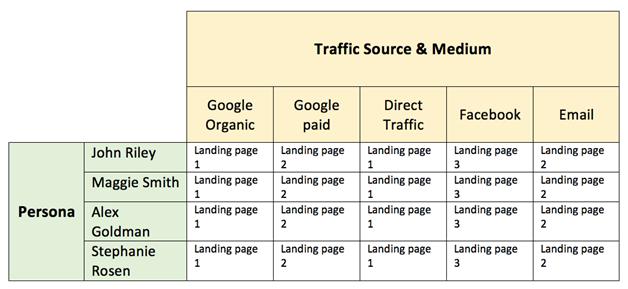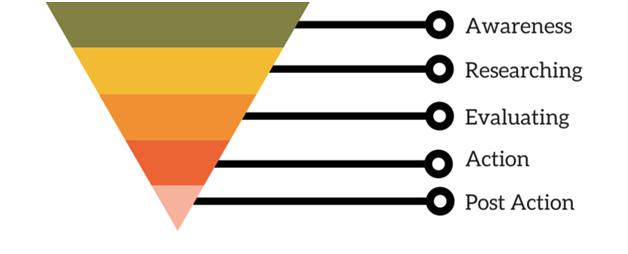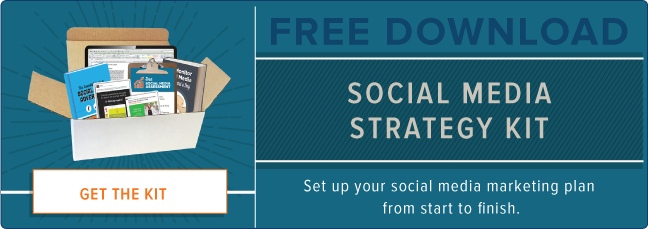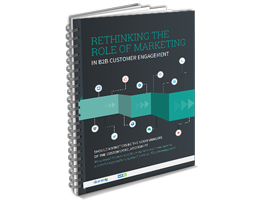204: 6 ‘Ordinary’ Things That Will Grow Your Blog into Something Extraordinary
204: 6 ‘Ordinary’ Things That Will Grow Your Blog into Something Extraordinary

How Ordinary Things Can Lead to Extraordinary Results With Your Blog
This week and I’m excited to be spending time face to face with quite a few ProBlogger podcast listeners and blog readers at our Aussie blogging events.
We’ve been holding annual Australian events since 2010 and it is a highlight of my year each time. It’s fantastic to put faces to names, hear the stories of what bloggers are learning and to get inspired by meeting many of you.
So because I’m away this week and busy with the event I thought it might be fun to give you a taste of what happens at a ProBlogger event and to play you a talk I gave at one of our events a few years ago. Continue reading “204: 6 ‘Ordinary’ Things That Will Grow Your Blog into Something Extraordinary”
Conversations of Distraction
As part of my daily routine traveling to work, I take the subway.
As I sit in my little part of the train, I can’t help but overhear the conversations around me. Dialogues, actually – the majority aren’t very conversational.
One in particular was a guy telling his girlfriend about issues he was going through at his workplace. How he was afraid that he was going to lose his job as he was having a major character clash with his supervisor.
The girl nodded a few times, then when the guy had finished she launched straight into a speech about her hair appointment later in the week.
No questions about her partner’s supervisor, or what was causing the clash. No comforting words.
Simply waiting until the talking had stopped and then into her own details.
It’s a common theme.
I’ve watched couples go through the motions of conversation but not really conversing.
I’ve sat in on business meetings before where someone is talking and you can clearly see who’s listening around the table and who isn’t.
And then they wonder why instructions weren’t carried out properly, or key points were missed.
So why aren’t we listening properly?
Have our attention spans really been eroded so much by incidental noise around us that we can no longer focus on the words behind the spoken ones?
Do we need to have something repeated to us before it really sinks in?
I’m not perfect – I know in the past I’ve been guilty of having selective hearing. Probably still am, if you ask my wife.
It’s something I had to work on, particularly when I went into business for myself. If I didn’t listen properly it was my livelihood.
With all the communication tools we have at our disposal today, perhaps we are distracted.
Perhaps the choice has made us lazier at filtering what’s noise and what’s important filler. Perhaps there’s a finer line than ever before between the two.
Whatever it is, one thing is clear – we aren’t listening as well as we’re hearing a lot of the time.
What’s your take? Are we listening less or am I off base? What’s your solution?
Conversations of Distraction originally appeared on Danny Brown – – all rights reserved.
Powered by WPeMatico
Set Your Blog for Success With These Simple Tactics
This is a guest contribution from freelance writer, Ayelet Weisz.
Blogging is hard work.
You need to come up with fresh, quality materials on a regular basis, promote them, connect with readers, network with peers and mentors – and that’s before you even see a single dollar for your effort.
I’ve put together some simple business tactics to help you set your blog for success, so you can live the pro blogger dream.
Set Inspiring (But Realistic) Goals
Now that you’re your own boss, you’ve got to set up internal motivation. The biggest success stories didn’t get there with someone telling them what to do every five minutes.
A great way to keep yourself motivated is to set up goals. Of course, I don’t just mean any goal. Making a million dollars by the end of your first year as a blogger might not be the most realistic goal you could think of.
The truth is, you have no way of knowing what will happen by the end of your first year, and you have no control over of others’ choices – Will they read your blog? Will they buy your products?
However, you can eliminate some of these unknown factors by conducting research about the possibilities your market contains – and you can increase the chances of realising your dreams by setting a different type of goal.
Focus on what kind of content you’ll write, how much content you’ll write, how you’ll promote it and when.
Focus on numeral items, like 8 posts a months on your blog and 8 guest posts that you’ll pitch to big blogs. Don’t set a goal of publishing 8 guest posts, only of submission. If someone says no, you’ll still have the confidence boost of reaching your goal. Then, you can exceed it by pitching that guest post to an additional blog.
Track Your Progress
The next step is to get the gold stars out track your progress. Write down what you are doing, what your productivity rate has been and notice what times a day or situations support you in getting more work done.
Set a meeting with yourself – be it once a week, once a month or once a quarter – to see how well you did, to discover your strong points. It’s important to be honest on where you need to be more accountable or get support.
Encourage yourself to ask questions, to say “I don’t know”, to ask for help. Sometimes, that help will come in the form of adjusting your expectations or re-shaping your schedule. Embrace your humanity as you embrace your new blogging journey.
Give yourself time, be gentle – and leverage your failures
Starting a new venture is never easy. Acquiring an abundance of new skills and tools takes determination, focus and accountability.
You will make mistakes.
Give yourself a time of grace and don’t be hard on yourself. People around you might pressure you. They could be your friends and family members, they could love you and want the best for you – and they might not believe your blog is what’s best for you. If it takes you time to monetize your blog, and it probably will, they’ll doubt it even more.
Don’t get carried away with that. It will take time. Embrace it as an opportunity to show yourself you can do the impossible.
Support yourself through this time. Join professional online and offline groups, share your challenges with people who understand rather than with people who don’t, and plan ahead financially.
It might work best for you to save a few months’ or a year’s worth of salary, then take that time off paid employment and market like there’s no tomorrow. Alternatively, it might be best for you to start building your blog slowly, as you keep a part time or full time job.
Expect to make mistakes.
These mistakes will be your guiding points to grow your blog even more as you go on. They could be transformed into guest posts on big blogs, case studies you can use to show your expertise (and how you turned failure to success) – and they can even turn you into a good mentor one day!
If nothing else, you’ll be able to look back one day and have a really good laugh. You’ll also be able to see how far you’ve come.
Socialise
Starting out at the blogsphere can be intimidating.People already know each other and the job.Friendships and communities have already been formed. Relationships with influencers are being shaped and re-shaped every single day.
This experience becomes easier once you feel there’s someone you could turn to. You, of course, need to have communication tools and the courage to connect when entering a new environment.
If you’re fearful about connecting with industry members, start small. Post comments on their blogs, then connect with them on Twitter or Facebook. Join online communities and reach out to one person at a time in a personal message.
Ask for their help, or offer a solution to a challenge they brought up. If they happen to just start out as you are, perhaps you could be a force of empowering support to one another, sharing tips and encouraging each other when one loses sight of the light at the end of the tunnel.
Maybe you’ll even find you have additional interests in common!
Did you face any of these challenges when you were starting out? How did build your blog? Or perhaps you’re just starting out and picked up some great tips for the road ahead. Share your story!
Ayelet Weisz (www.AyeletWeisz.com) is an enthusiastic freelance writer, blogger and screenwriter, who focuses on business, technology, travel and women’s issues. Get her free report, 48 Must-Live Israeli Experiences, on her travel blog, and connect with her on Twitter.
Set Your Blog for Success With These Simple Tactics
http://www.problogger.net/archives/2013/06/11/set-your-blog-for-success-with-these-simple-tactics/
http://www.problogger.net/archives/category/miscellaneous-blog-tips/feed/
@ProBlogger» Miscellaneous Blog Tips
Blog Tips to Help You Make Money Blogging – ProBlogger
http://www.problogger.net/wp-content/plugins/podpress/images/powered_by_podpress_large.jpg
Blog Promotion Strategies: How to Think Outside the Square
It’s day three of our thirty one day challenge!
How are you feeling? Pumped? Motivated? Ready to shake up your blog and your routine during these 31 days?
We’ve already covered nailing your elevator pitch and how to create a super-shareable list post, and today it’s all about getting yourself off your blog to promote it and find some readers.
“Build it and they will come“, you think? That is really not the case with blogging.
You need to put your blog where people will read it. In today’s podcast we discuss doing just that – how, where, and why to promote your blog with the maximum chances of it being seen. You have to get off your blog to get your blog read!
In todays episode there are tips on where to go to share your posts, how to build reader profiles (and why you need them), and how to figure out where those ideal readers are. Then we go through what to give those readers when you finally catch their attention – are you worthy of being found? How are you being useful? What kind of content are you creating?
Where are those potential readers?
The internet is vast, and while we immediately think of social media as the first place to share content, it isn’t always the only place.
In this episode we talk about developing editorial schedules for social media, but we also go beyond that, into the realm of guest posts, forums and other forgotten places to be seen.
We’re going to encourage you today to get off your blog and put yourself out there. Take today’s challenge and choose a certain post to share. All it takes is a little of your time and some creative thinking.
Click here to listen to day three of the 31 Days to Build a Better Blog series on the ProBlogger Podcast.
Let us know how you go with today’s challenge on twitter – just tag @ProBlogger and head to todays show notes to leave a comment.
Further Reading:
- How to Promote Your Blog Without Letting the Rest of Your Blogging Slide
- How to Promote Your Blog with Content that Will Grow your Traffic, Links, and Shares (especially helpful for business bloggers)
- Topsy.com helps you find influencers in your niche that you might be able to pitch to
- How to Promote Your Blog on Social Media – Hootsuite give some out-of-the-box ideas on leveraging the different streams of all the popular platforms
- Hubspot have an infographic on 36 Tried-and-True Ways to Promote Your Blog Posts
Don’t forget to subscribe to our podcast on iTunes and Stitcher to get updates of new episodes.
Blog Promotion Strategies: How to Think Outside the Square
http://www.problogger.net/archives/2015/07/03/blog-promotion-strategies-how-to-think-outside-the-square/
http://www.problogger.net/archives/category/31-days-to-building-a-better-blog/feed/
@ProBlogger » 31 Days to Building a Better Blog
Blog Tips to Help You Make Money Blogging – ProBlogger
http://www.problogger.net/wp-content/plugins/podpress/images/powered_by_podpress_large.jpg
The 4 Fundamental Steps of Conversion Optimization

Once upon a time, I was sitting in my office looking over data for one our new clients and reviewing the conversion project roadmap. The phone rang and on the other end was the VP of marketing for a multi-billion-dollar company. It is very unusual to get an unannounced call from someone at his level, but he had an urgent problem to solve. A good number of his website visitors were not converting.
His problem did not surprise me. We deal with conversion rates optimization every day.
He invited me to meet with his team to discuss the problem further. The account would be a huge win for Invesp, so we agreed on a time that worked for both us. When the day came, our team went to the company’s location.
We started the discussion, and things did NOT go as I expected. The VP, who led the meeting, said, “we have a conversion problem.”
“First-time visitors to our website convert at a rate of 48%. Repeat visitors convert at 80%!”
I was puzzled.
Not sure what exactly puzzled me. Was it the high conversion numbers or was it the fact that the VP was not happy with them. He wanted more.
I thought he had his conversion numbers wrong. But nope. We looked at his analytics, and he was correct. The numbers were simply amazing by all standards. The VP, however, had a different mindset. The company runs thousands of stores around the US. When someone picks up the phone and calls them, they convert callers at a 90% rate. He was expecting the same conversion rate for his online store.
Let’s face it. A typical e-commerce store converts at an average of 3%. Few websites are able to get to anywhere from 10 to 18%. These are considered the stars of the world of conversion rates.
The sad truth about a website with 15% conversion rate is that 85% of the visitors simply leave without converting. Money left on the table, cash the store will not be able to capture. Whatever way you think about it, we can agree that there is a huge opportunity, but it is also a very difficult one to conquer.
The Problem with Conversion Optimization

Most companies jump into conversion optimization with a lot of excitement. As you talk to teams conducting conversion optimization, you notice a common thread. They take different pages of the website and run tests on them. Some tests produce results; others do not. After a while, the teams run out of ideas. The managers run out of excitement.
The approach of randomly running tests on different pages sees conversion rate optimization in a linear fashion. The real problem is that no one shops online in a linear fashion. We do not follow a linear path when we navigate from one area of the website to the next. Humans most of the time are random, or, at least, they appear random.
What does that mean?
The right approach to increase conversion rates needs to be systematical, because it deals with irrational and random human behavior.
So, how do you do this?
The Four Steps to Breaking to Double Digits Conversion Rates
After ten years of doing conversion optimization at Invesp, I can claim that we have a process that works for many online businesses. The truth is that it continues to be a work in progress.
These are the four steps you should follow to achieve your desired conversion rate:
Create Personas for Your Website
I could never stop talking about personas and the impact they have on your website. While most companies talk about their target market, personas help you translate your generalized and somewhat abstract target market data into a personalized experience that impacts your website design, copy and layout.
Let’s take the example of a consulting company that targets “e-commerce companies with a revenue of 10 million dollars or more.” There are two problems with this statement:
- The statement is too general about the target market (no verticals and no geography, for example)
- I am not sure how to translate this statement into actionable items on my website or marketing activity
You should first think about the actual person who would hire the services of this consulting company. Most likely, the sales take place to:
- A business owner for a company with annual revenue from 10 to 20 million dollars.
- A marketing director for a company with annual revenue from 20 to 50 million dollars.
- A VP of marketing for a company with annual revenue over 50 million dollars.
Now, translate each of these three different cases into a persona.
So, instead of talking about a business owner for a company that is generating annual revenue from 10 to 20 million dollars, we will talk about:
John Riley, 43 years old, completed his B.A. in physics from the University of Michigan-Ann Arbor. He is a happy father of three. He started the company in 2007 and financed it from his own pocket. His company generated 13.5 million dollars of revenue in 2014 and expects to see a modest 7% increase in sales in 2015. John is highly competitive, but he also cares about his customers and thinks of them as an extended family. He would like to find a way to increase this year’s revenue by 18%, but he is not sure how to do so. He is conservative when it comes to using new marketing techniques. In general, John does not trust consultants and thinks of them as overpaid.
This is an oversimplification of the persona creation process and its final product. But you get the picture. If you are the consulting company that targets John, then what type of website design, copy and visitor flow would you use to persuade him to do business with you?
What data points do you use to create personas for your website? I would start with this:
- Market research
- Demographical studies
- Usability studies
- Zip code analysis
- Existing customer surveys
- Competitive landscape
- AB and Multivariate testing data

A website or a business should typically target four to seven personas.
Add Traffic Sources
So, you have the personas. These personas should impact your design, copy and visitor flow.
But how?
Let’s start by looking at analytics data. Look for a period of six months to one year and see the top traffic sources/mediums. If your website has been online for a while, then you will probably have hundreds of different sources. Start with your top 10 traffic sources/medium and create a matrix for each of the personas/traffic source/landing pages:

Now, your job is to evaluate each top landing page for each traffic source through the eyes of your website personas. For each page, you will answer eight questions.
The persona questions: Eight questions to ask

- What type of information would persona “x” need to see to click on to the next page on the website?
- What would be the top concerns persona “x” have looking at the page?
- What kind of copy does persona “x” need to see?
- What type of trigger words are important to include on the page for persona “x”?
- What words should I avoid for persona “x”?
- What kind of headline should I use to persuade persona “x” to stay on my website?
- What kind of images should I use to capture persona “x” attention?
- What elements on the page could distract persona “x”?
As you answer these questions for each of the personas, you will end up with a large set of answers and actions. The challenge and the art will be to combine all these and make the same landing page work for all different personas. This is not a small task, but this is where the fun begins.
Consider the Buying Stages
You thought the previous work was complex? Well, you haven’t seen anything just yet!
Not every visitor who lands on your website is ready to buy. Visitors come to your website in different buying stages, and only 15-20% are in the action stage. The sequential buying stages of a visitor are:
- Awareness stage (top of the sales funnel)
- Research stage
- Evaluating alternatives
- Action stage
- Post action
A typical buying funnel looks like this:

How does that translate into actionable items on your website?
In the previous exercise, we created a list of changes on different screens or sections of your website based on the different personas. Now, we are going to think about each persona landing on the website in one of the first four buying stages.
Instead of thinking of how to adjust a particular screen for John Riley, now you think of a new scenario:
Persona “x” is in the “evaluating alternatives” stage of the buying funnel. He lands on a particular landing page. What do I need to adjust in the website design and copy to persuade persona “x” to convert?
Our previous table looks like this now:

Next, answer all eight persona-questions again, based on the different buying stages.
Test your different scenarios
This goes without saying; you should NEVER introduce changes to your website without actually testing them. You can find plenty of blogs and books out there on how to conduct testing correctly if you are interested in learning more about AB testing and multivariate testing.
For a start, keep the five No’s of AB testing in mind:

1. No to “Large and complex tests”
Your goal is NOT to conduct large AB or multivariate tests. Your goal is to discover what elements on the page cause visitors to act a specific way. Break complex tests into smaller ones. The more you can isolate the changes to one or two elements, the easier it will be to understand the impact of different design and copy elements on visitors’ actions.
2. No to “Tests without a hypothesis”
I can never say it enough. A test without a good hypothesis is a gambling exercise. A hypothesis is a predictive statement about a problem or set of problems on your page and the impact of solving these problems on visitor behavior.
3. No to “Polluted data”
Do not run tests for less than seven days or longer than four weeks. In both scenarios, you are leaving yourself open to the chance of inconsistent and polluted data. When you run a test for less than seven days, website data inconsistencies you are not aware of may affect your results. So, give the test results a chance to stabilize. If you run a test for more than four weeks, you are allowing external factors to have a larger impact on your results.
4. No to “Quick fixes”
Human psychology is complex. Conversion optimization is about understanding visitor behavior and adjusting website design, copy and process to persuade these visitors to convert. Conversion optimization is not a light switch you turn on and off. It is a long-term commitment. Some tests will produce results and some will not. Increases in conversion rates are great but what you are looking for is a window to visitor behavior.
5. No to “Tests without marketing insights”
Call it whatever you like: forensic analysis, posttest analysis, test results assessment. You should learn actionable marketing insights from the test to deploy across channels and verticals. The real power of any testing program lays beyond the results.
If you follow the steps outlined in this blog, you will have a lot to do.
So, happy testing!
About the author: This guide was written by Khalid Saleh. He is the CEO of Invesp, a conversion optimization software and services firm with clients in 11 different countries.
Powered by WPeMatico
Are You Ready to be a Full-Time Blogger?
This is a guest contribution from freelance writer, Ayelet Weisz.
A big part of the pro blogger dream is to be your own boss. No more office politics, competitions with colleagues or having to prove yourself to someone who reaps all the benefits of your hard work. You’ll set your own rules and live life your way.
Yet if you’ve never had to be accountable to yourself on a large-scale, long-term project, you might find yourself overwhelmed.
1. Unrealistic expectations. If you don’t know your own limitations, you could end up planning to invest too little time or leaving too little flexibility in your budget. You could also work yourself to exhaustion.
2. Getting lost. Being a full-time blogger leaves you plenty of opportunities to get lost – online, in sleep, in your own fears.
3. Missing tools and skills. There are lots of skills to master and tools to learn – not only in your chosen field of blogging, but in business management, time management, marketing – and the list goes on.
Do You Have The Skills?
Fortunately, tools and skills to be a successful full-time blogger are learnable. You need to incorporate the process of learning into your business plan, and don’t despair if you find yourself taking longer in one step or another. Instead, relish in your blogging journey and, as you challenge yourself, remember to give yourself a break.
Would You Hire You?
Few jobs will take you in without an interview – and your blogging business should be one of them. You must define the job before you can find out if you’ve got the right stuff.
You need to research what it means to run a full time blog and own a business, how to live on fluctuating income, what kind of marketing strategies are usually used, and where you could break the marketing rules to help your blog shine.
Read sites and magazines about your chosen niche, as well as general sites about professional blogging (like Problogger!), entrepreneurship and small businesses.
Once you have a vision of what your daily and annual life could look like, ask yourself the tough questions:
- Are you ready to get started on the job?
- Which areas require more learning, practise, tools or expertise?
- What could you do with the skills you have right now to start building your blog?
Just as importantly, put on the interviewee’s hat – and ask yourself if you even want the position.
Go on at least one good course
Getting educated is valuable in gaining a deeper understanding of what you’re getting yourself into, as well as to speed up the process. Your chosen course, or several courses, might be about getting certification or about improving through feedback you’d get from professionals on your creative work. It might be about writing, marketing, business management or creating more self confidence in your life.
You could choose to learn all these aspects or some. You could learn them one by one or mix them together. You could decide learning is another business task, like marketing – or you could set aside a concentrated learning time before you take your first practical step in building your blog.
While you’ll likely keep on learning as you develop your blogging business, it’s easy to get caught up in the learning and never take a step beyond that.
Give yourself a deadline for when you absolutely have to go register your business or pitch a guest post for the first time.
Do You Have The Budget?
Importantly, remember that you need to save money in advance and put it aside to cover the cost of the course and the hours of paid work that you might miss.
Don’t forget to budget enough time for implementation either – homework tends to take longer than what you first expect.
Do You Need a Mentor?
At times, it’s recommended to hire a mentor even if you took a course or few. With a mentor, you’ll be able to ask questions you might not feel comfortable asking in a group, get a sense of direction and compile a list of actions it’s best to take for your specific blog and situation.
You might choose to keep this mentor on payroll for longer, yet sometimes even an appointment or several will do. Then, you could go on your merry way and sign up for another session when you feel one is needed.
Another option is to join a community of peers or top professionals, or one that’s combined of various levels of skills and successes. These can be paid or free, an online message board, meetings in your community or networking organisations’ gatherings.
Either way, that personalised attention will enable you to learn the inside world of launching and managing a blog, of marketing, of communicating with readers and of being the best blogger you can be.
Have you got more tips to test if you’re ready to start pro blogging? Share them with us in the comments!
Ayelet Weisz (www.AyeletWeisz.com) is an enthusiastic freelance writer, blogger and screenwriter, who focuses on business, technology, travel and women’s issues. Get her free report, 48 Must-Live Israeli Experiences, on her travel blog, and connect with her on Twitter.
Are You Ready to be a Full-Time Blogger?
http://www.problogger.net/archives/2013/06/10/are-you-ready-to-be-a-full-time-blogger/
http://www.problogger.net/archives/category/miscellaneous-blog-tips/feed/
@ProBlogger» Miscellaneous Blog Tips
Blog Tips to Help You Make Money Blogging – ProBlogger
http://www.problogger.net/wp-content/plugins/podpress/images/powered_by_podpress_large.jpg
ProBlogger’s Guide to Blogging for your Business
This book was launched at the perfect time for me, because I’m working hard to turn my photography blog into a business. This is my review of the latest ProB…
7 Surprising Skills Blogging is Teaching You
This is a guest contribution from Kelly Teng, Digital Outreach Specialist at Switched on Media.
Blogging can take you on a whirlwind journey. It can have you running around at events, losing sleep, and sitting in front of your computer for hours and hours (and hours…). The end result is a great blog with stellar posts, and a myriad of experiences that you get to embark on and incredible people you get to meet.
However, your experiences and the amount of time you invest don’t just make for a great blog – in fact, your blogging benefits you in ways that you may not even realise.
Here are a few surprising skills that you acquire as a byproduct of blogging. You may discover some hidden talents you never thought you had (party tricks not included).
The gift of words
All right, perhaps this isn’t a surprising skill: blogging has you writing almost every day, so it’s almost a no-brainer that you’ll become proficient at it over time!
When you blog, you have to think up creative and interesting ways to convey your content to your readers, and also you have to articulate your thoughts clearly and express yourself well. Although you may not notice it, your writing has improved. Don’t believe me? Take a look at your first few posts and compare them to what you are writing now.
Blogging is also useful to help you find and establish your own personal tone of voice and style of writing. Whether your words are motivational, inspirational, dry and sarcastic, funny, or apathetic, you’ll slowly uncover a style that will stick with you and your blog for years to come.
Time management
Us humans are notorious for complaining about having so much to do in so little time. We struggle to find time for work and looking after our families, let alone looking after ourselves and doing the things we want to do.
Blogging is almost like a crash-course in time management. You have to manage your regular job (if you have one), your family, writing, answering emails, scheduling posts, and formatting and designing your blog. You have to coordinate taking photos for a post with making lunch or dinner for your kids. You have to be as punctual as possible with your posts and comment responses; if you don’t, your readership stays stagnant or falters. You have to check and reply to emails quickly as well, because often opportunity can come knocking, get impatient, and leave.
It starts to get overwhelming, but then you adjust and figure out better ways to manage your time. Your blog is teaching you how to be more efficient and effective, and to get as much out of every day as you can.
A little bit of design
When you started out, you probably selected a default Blogspot, WordPress or Tumblr theme for your blog. However, you have probably found that as your readership grows, you begin looking for a new theme or revamp your site with a customised feel (maybe it’s even in alignment to your tone of voice). You also have probably jazzed up your photos with text, borders, and colour balanced them on Photoshop to make them look better as well.
Without even realising it, your blog has helped turn you into a bit of a designer. From choosing a colour palette to redesigning your layout and editing your images, you now have more design experience than much of the adult population – without even trying.
Relationship creation and maintenance
Brands and bloggers are working together more now than ever. Many bloggers get approached by brands on a daily basis for reviews, giveaways, advertisements and guest posts; for those that haven’t yet, it’s only a matter of time.
The more you interact with brands and advertisers, the more adept you become at creating and maintaining business relationships. You learn how to reach diplomatic solutions and establish partnerships with stakeholders, and to work in a way that is mutually beneficial for you, your readers, and your stakeholders (be it a brand, client, or customer).
Through working with brands, you can also learn how to become a brand storyteller and a creative as well, by talking about products or companies in a new and exciting way that fits your audience.
Diplomacy to rival U.N. delegates
…and speaking of diplomatic solutions, blogging also helps you build your diplomacy skills.
There are always going to be readers who will be unhappy when you change something, or trolls who have nothing better to do but to try and upset people. Unfortunately, these are a byproduct of sharing a piece of your life with the world; however, another byproduct is the chance to build your diplomacy and establish best business practices.
Every unhappy reader you manage to quell and every troll you manage effectively contributes to your ability to diffuse a situation well – and this will come in handy often in day-to-day life, as well as in business. For extra tips to enhance your skills, have a read of Dale Carnegie’s How to win friends and influence people.
Content creation and management
The key to a successful blog is content – there’s no getting around it. As a blogger, you become a curator of content much like an editor of a magazine or newspaper. You plan and schedule posts, and must think about newsworthy and unique content that is relevant to your readership demographics. If your blog accepts sponsored posts, you often have to carefully plan it so it is spaced out along with regular content.
You learn how to create useful and original content, and how to create a balance of editorial and sponsorship. In essence, you have the skills of an editor, which makes sense – after all, you are the editor of your own publication.
Social media strategy and community management
This is perhaps one of the most coveted skills in today’s technologically saturated environment. With more and more businesses and people going online, experience with social media strategy and community management is a vital asset to have on your side.
As a blogger, you talk to your readership base through social media outlets such as Facebook and Twitter, and you engage with them and share your life through Instagram and Pinterest. You plan content in advance sometimes, and learn how to acquire more followers and post content that is relevant, informative, and interesting.
Through blogging, you have acquired the skills needed to manage a community online and strategies to foster stronger engagement and create effective content on social channels.
Did you ever realise you were becoming so talented? What other skills do you think your blogging has taught you?
Kelly Teng is a Digital Outreach Specialist at Switched on Media with a penchant for all things internet-related. Check out her other insights and musings here, or follow her on Twitter at @tellykeng.
7 Surprising Skills Blogging is Teaching You
http://www.problogger.net/archives/2013/07/11/7-surprising-skills-blogging-is-teaching-you/
http://www.problogger.net/archives/category/miscellaneous-blog-tips/feed/
@ProBlogger» Miscellaneous Blog Tips
Blog Tips to Help You Make Money Blogging – ProBlogger
http://www.problogger.net/wp-content/plugins/podpress/images/powered_by_podpress_large.jpg
Getting Back Into The (Right) Deliverables Business
“Get out of the deliverables business” has become quite a mantra in the lean startup and UX movements. There’s much to love in that sentiment — after all, for every wireframe you make, you’re not shipping code to customers.

But I’m worried that, just like with the concept of a minimum viable product, we’ve taken this sound advice to an extreme that’s actually hurtful to the creation of good products. What follows is an account of my own journey in navigating these stormy design seas together with the community.
The post Getting Back Into The (Right) Deliverables Business appeared first on Smashing Magazine.
Powered by WPeMatico
5 Mistakes That Will Bankrupt Your Agency
These days, agencies tend to get caught up in near-constant talk of creativity, innovation, and disruption. But all that noise can drown out the real reason you’re in this business: to make money.
The truth is that you’re trying to make a living — for yourself, your family, and your employees. And no matter how hard you work to serve clients, when you don’t make money, it’s pretty tough to sustain enthusiasm.
Even when you are making money, this is a tough business. That’s why it’s crucial to avoid certain catastrophic mistakes agencies make every day.
Draining Water From Your Own Pool
Even smart agency owners make some of these painful mistakes. They don’t willfully sabotage their own efforts, but they fail to realize the long-term impact these seemingly innocuous decisions carry.
You might even recognize yourself in these five financially draining errors — and not realize how harmful they are to your bottom line.
5 Mistakes That Will Bankrupt Your Agency
1) Your pricing is too basic.
Nine times out of ten, agencies present clients with a single price and package. However, when you do this, nine times out of ten, they’ll push back.
Instead, always give them three options. Build the middle option first because this is the one they’re likely going to choose. This option should be your ideal sale and what’s really best for the client. According to a study on the center-stage effect, consumers feel that options put at the center of a range of options are the most liked.
Once you’ve constructed your “middle” option, strip some of those deliverables away to create a first option. This bare-bones option is priced about 20 percent to 25 percent lower than the middle option.
As for the third option, add some bells and whistles — not ones that are meaningless to the client, but factors that take things above and beyond the minimum standard. Price it about 30 percent to 35 percent higher than the second option.
When you present these three options, more often than not, clients will talk themselves into the second option. What’s beautiful about it is that they feel like they have control over their budgets and over the work.
2) You give it away for free.
Virtually all agencies have a gaping hole called scope creep: allowing the scope of a project to get larger without the price rising accordingly. If we could control it, we would all be driving nicer cars and taking better vacations.
I’m not suggesting you nickel-and-dime your clients to death, but you do have to plug that hole. Of course, we can look at our clients and be frustrated that they keep asking for more and more. But the truth is that the blame sits squarely with us.
Often, your scope documents are too vague, failing to define deliverables in a way that leaves no room for interpretation. Or maybe they’re too broad, without any boundaries.
If you have account people managing client project budgets, they may not understand agency math. You expect them to be good stewards of your profitability, but they don’t understand the game they’re playing — no one has taught them the rules.
In most agencies, leaders never take the time to teach employees how an agency makes money. Thus, they fail to understand that everyone, every single day, either makes the agency money or costs it money by over-servicing clients or not negotiating better with vendors.
When employees don’t understand that, they believe their jobs are not to make money, but to keep clients happy. Naturally, the easiest, fastest way to do that is by over-servicing clients. Voilà: scope creep.
Don’t take my word for it: It turns out that by overservicing just once a week, an agency can give away a whopping seven figures of essentially free work.
3) You let clients slowly pick you to death.
When your scope documents are too vague, you’ll get clients exceeding them in no time at all, asking for the 12th or 13th revision. Yet chances are good that no one will issue a change order. This is especially true if your scope documents are loose because you know you’re standing on shaky ground.
However, the biggest reason is that by the time you’re far enough along to consider a change order, your account executive is thinking, “The client wants to make a minor change. By the time I calculate the change order costs, write up a document, send it to the client, and get him to sign off on it, we could have just made the change. So why waste more time and irritate the client by issuing this change order? Screw it. I’m just going to make the change.”
Here’s the easy fix: In all of your scope documents, include language that describes a flat fee for changes beyond the number of changes allowed. Clearly define the deliverables and the timetable.
If, for instance, you’re working on a brochure for a client and you’re going to give the client four revisions, include this: “With this estimate, you are going to be granted four revisions. Any revisions after the fourth revision will cost a flat $250.”
4) You put out small fires at the expense of the raging inferno.
You’re so busy running around with a fire extinguisher, chasing after the drama of the day, that you don’t really have a vision for how you want to move your agency forward. How do you want it to be different a year from now?
If you really do want to grow your business — not necessarily in the number of bodies, but in fulfilling your vision for your agency — it won’t happen without planning.
5) Your new business plan sucks.
Have you ever caught yourself saying any of these phrases? “Well, we grow based on referrals.” “We’re going to hire a guy.” “We’re just too busy taking care of clients to chase after clients.” “We’re really lucky the phone is still ringing.”
If so, you don’t have a plan. Sure, all of that may be true today, but if you’ve been in business for any length of time, you know it ebbs and flows. That’s why you need a consistent new business program to keep your sales funnel full. It’s getting tougher and tougher to find great client prospects, and the time period between meeting them and signing them is stretching out.
If you don’t drum up new business now, chances are you won’t start until the minute you get the sense that your most valuable client — your gorilla — is unhappy. Or, even worse, the dread will strike the minute you get the phone call that he or she is done. By then, it’s too late. New business is a muscle you exercise every single day, no matter how busy you are.
If you’re the agency owner, new business should be your primary responsibility, taking up 40 percent to 60 percent of your time. You’re not always out pitching or calling on prospects; maybe you’re writing content. But not spending time on new business is a big money-sucking mistake agencies make every day.
If a Shark Stops Swimming, It Dies
Above all, make sure you’re constantly evolving, growing, and refining. Even at the best and most profitable agencies, there’s room for growth and improvement. Whatever solutions you’re using now, different options will exist a year from now. Our world is changing too fast for us not to keep up with it. And that doesn’t happen without a plan.

![]()
Powered by WPeMatico
Start Blogging NOW! (The ONE Thing I Wish I Had Done Differently in Business!)
http://www.virtualbusinesslifestyle.com If you’re an entrepreneur / business owner and you don’t already have a blog that you are regularly updating – you need to start one. TODAY! Find…
Sailing With Sails.js: An MVC-style Framework For Node.js
I had been doing server-side programming with Symfony 2 and PHP for at least three years before I started to see some productivity problems with it. Don’t get me wrong, I like Symfony quite a lot: It’s a mature, elegant and professional framework. But I’ve realized that too much of my precious time is spent not on the business logic of the application itself, but on supporting the architecture of the framework.

I don’t think I’ll surprise anyone by saying that we live in a fast-paced world. The whole startup movement is a constant reminder to us that, in order to achieve success, we need to be able to test our ideas as quickly as possible. The faster we can iterate on our ideas, the faster we can reach customers with our solutions, and the better our chances of getting a product-market fit before our competitors do or before we exceed our limited budget. And in order to do so, we need instruments suitable to this type of work.
The post Sailing With Sails.js: An MVC-style Framework For Node.js appeared first on Smashing Magazine.
Powered by WPeMatico
#SocialSkim: Reflecting on a Super-Social 2015, Plus 14 More Stories in This Week's Roundup
It’s the last ‘Skim of the year, so check out the yearend roundups circulating in the social feeds, and learn which trends will be most critical for businesses in 2016. Also: cool new stuff, including how aging Millennials will influence business, and Web analytics that can track emotions. Read the full article at MarketingProfs
Powered by WPeMatico
The Web Marketing Ninja’s Mind Map
In this video ProBlogger’s Web Marketing Ninja shares a detailed mind map into his approach to transitioning a blog from a hobby to a business. Download the …
15+ Best Business Consulting WordPress Themes For 2017
When it comes to business, standing apart from the crowd is very important. While consultants can be from any field, but its important than they reach out to the prospective clients and showcase their work...
The post 15+ Best Business Consulting WordPress Themes For 2017 appeared first on 85ideas.com.
Four Trends Elevating Marketing as the Key Business Engine

Many of us who have been in B2B marketing for some time know that marketing has been undervalued or plain neglected in a majority of small and mid-sized companies. As Doug Davidoff of Imagine Business Development points out: “as recently as five years ago, it was not unusual for me to meet with companies that were several hundred million in revenue who had no marketing department or focus whatsoever.”
Marketing was seen in some quarters as just a pretty face, a cost center responsible for advertising, PR, white papers, tradeshows, and other unquantifiable expenses. Marketing was staff, not line, so not a revenue generator, and so not particularly powerful.

How things have changed! Now marketing is rapidly emerging as the engine of the company, touching all aspects of the B2B business. In this blog, we will discuss four major trends that are causing this dramatic shift:
- Emergence of SAAS business model
- Value of Internet as a research platform
- Customer success becoming an integral part of Sales, and
- Consumerization of B2B
Let us examine each of these trends in detail. As will be shown, these trends are interrelated, but each one deserves to be evaluated on its own merit.
1. The emergence of the SAAS business model
B2B business used to be all about selling large one-time deals. Once the deal was done, the vendor wasn’t very concerned about the new customer for many years. Because of the large deal sizes, this process necessitated the involvement of certain key people for the successful closure of the deal:
- Top-level executives from the prospect’s side, with the authority to sign off on a big purchase
- A heavy-hitter sales person from the vendor, with the authority to negotiate, to see the deal through
Lots of these deals happened even though the end users of the prospect had many concerns, but the final decision maker was influential enough or powerful enough to make the deal happen.
The emergence of software as a service – SAAS – has changed that dynamic. To begin with, the deal sizes have shrunk dramatically because of the inherent economics of SAAS model. It’s a subscription model, and that customer typically pays only one year’s worth of subscription at a time. The shrinkage in deal size and resulting lower visibility reduced the necessity of the top-level exec and the heavy-hitter salesperson. (Has this contributed to the demise of the business lunch? Just speculating.)
This in return gave more bandwidth (and more seats in the room) for the opinion of the customer company’s rank-and-file in the decision process. More people get to weigh in and are heard. To accommodate this new sales framework, vendor businesses found they need to inform and empower multiple customer stakeholders (end users and decision makers), which marketing is uniquely equipped to do. This need for more communication ensured the ascendancy of marketing in businesses.
2. The role of the Internet as the research platform
Before the advent of the Internet, it fell to sales team to educate a prospect on the benefits of the product or service they were offering. Now with the Internet widespread and as necessary as air, it has impact on the buying process as well. “Today’s buyers might be anywhere from two-thirds to 90% of the way through their journey before they reach out to a vendor,” according to Lori Wizdo, a principal analyst of Forrester Research.

Ms. Wizdo’s insight is corroborated by other studies. According to a report by CEB and Google, “Today’s business buyers do not contact suppliers directly until 57% of the purchase process is complete.”
The result of the buyer’s self-education: sales has a smaller, shorter role to play. Traditional sales efforts have been reduced by more than half. Consequently, it has fallen to marketing to educate and nurture that potential customer, while that purchaser is doing the research as part of their buying process.
This requires marketing to create a variety of content targeting different stakeholders and knowledge levels – content including blogs, eBooks, webinars, calculators, and more. Once developed, the content needs to be deployed intelligently through the company website and other channels, and of course, through a marketing automation platform.
Thus the emergence of the Internet medium ensured the ascendancy of marketing as a business engine.
3. The growing importance of Customer Success
As mentioned before, the focus of B2B in earlier times was to sell the “big deal,” with lower (if any) focus on whether the customer successfully implemented and adopted the new product.
In the new SAAS model, the vendor has to take more responsibility in working with the customer so that this buyer first successfully adopts the product, and then takes full advantage of the functionalities offered. (Anything less and that customer is likely to cancel the service mid-stream). While traditional customer support continues to play an active role in this adoption, marketing’s role as a primary communications agent has expanded to educate and empower the customer at various functional levels.
A related requirement of the SAAS model has been to develop communities of customers so that they can learn from each other and derive more value (while also reducing reliance on customer support). Marketing does very well both online and offline in organizing and maintaining customer forums. Just think of the roaring success of Salesforce’s “Dreamforce” annual conference, which continues to be the standard bearer for such initiatives.
4. The consumerization of B2B
We are also experiencing an ongoing merger of media landscapes of consumer and business. B2B spending is on the ascendancy on Facebook and Instagram, which provide alternate, consumer-focused channels to reach B2B decision makers and stakeholders. It’s a new way to prospect within a company or within a community. Marketing is uniquely equipped to identify and deploy such channels, and to help sales with company-approved messaging.
To understand how central marketing can be to a business, one needs only to look at a typical B2C company, particularly an eCommerce business. In such a company (Amazon or Zappos, for example), marketing assumes the role of sales as well as traditional marketing. Thanks to highly attributable channels like Google PPC and affiliate partners, these companies can connect the dots directly between marketing investment and revenue.

Many SAAS companies, especially those with low price points, have moved closer to a marketing-only model. They’ve lowered the emphasis on sales – indicating that the consumerization of B2B business is here to stay.
Conclusion
All these trends and their implications illustrate clearly that we are moving to a golden age for marketing and marketers, as marketing is increasingly seen as a business engine for managing change and driving revenue.
Marketers should see this as an opportunity, embrace the challenge, and go for the risks and rewards associated with it.
For more information on the new expanded roles of marketing, take a look at the comprehensive study from Gleanster and Act-On – Rethinking the Role of Marketing in B2B Customer Engagement, to learn how how top companies are taking control of the full customer lifecycle with new metrics, technology, and a refined focus.
Powered by WPeMatico














